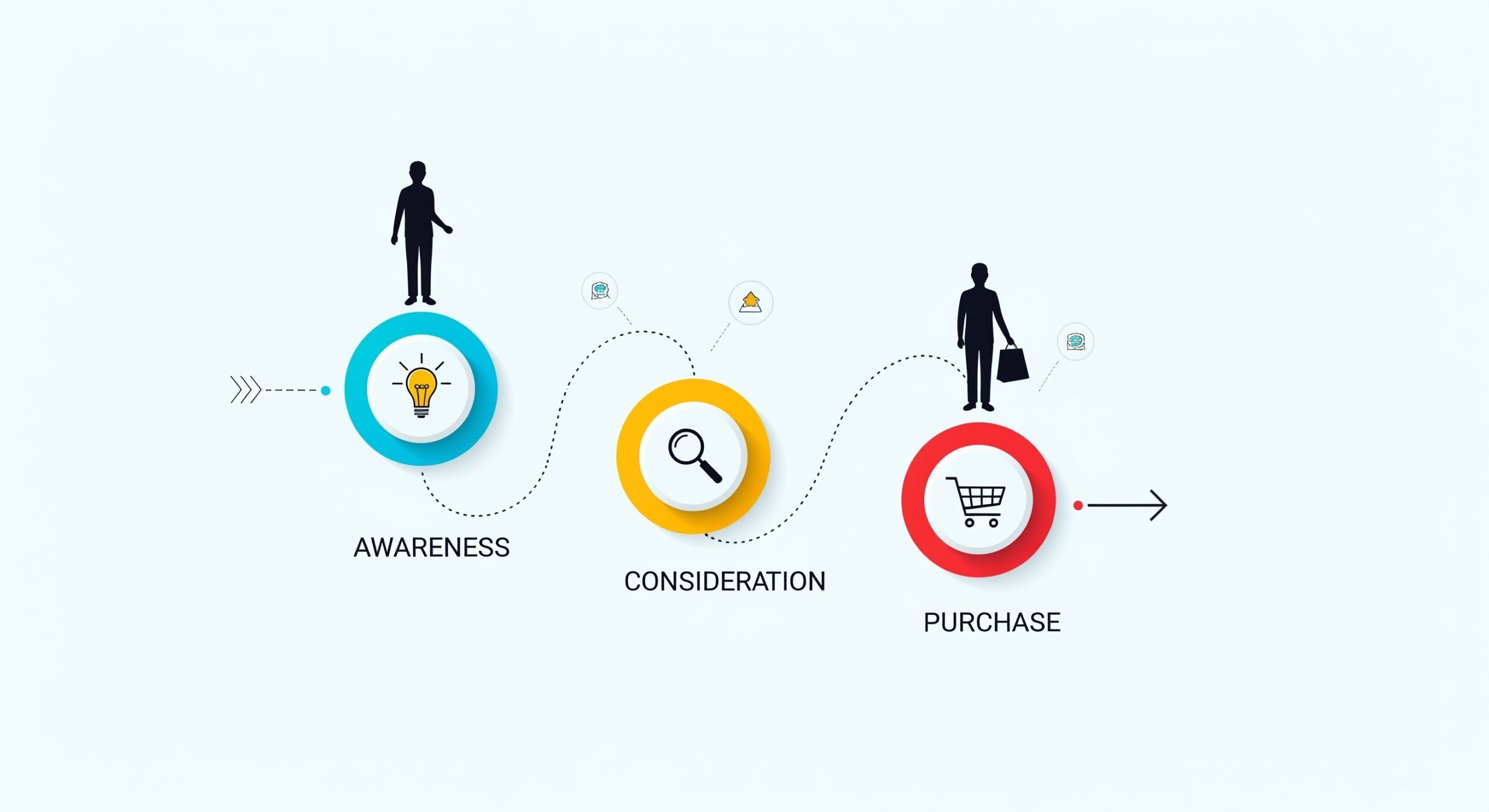
The Ultimate Guide to Customer Journey Mapping: Steps, Examples, and Best Practices
Understanding your customers is no longer a luxury—it’s a necessity. While many businesses focus on sales funnels and marketing campaigns, the real secret to customer loyalty and growth lies in understanding the entire customer experience. This is where customer journey mapping comes in.
This comprehensive guide will walk you through what a customer journey map is, why it’s so important, and how you can create one to transform your business.
Understanding the path to purchase is the first step before you start mapping the customer journey. While the path to purchase outlines the linear steps a customer takes, a journey map provides a holistic view of their feelings, thoughts, and actions at every stage. It’s the difference between seeing a map and walking the terrain yourself.
What is a Customer Journey Map?

A customer journey map is a visual representation of the entire process a customer goes through when interacting with your company. It’s a story told from the customer’s perspective, highlighting their motivations, pain points, and emotions at each stage of their journey.
The map typically visualizes a series of steps and key data points, including:
- Customer Actions: What the customer is doing.
- Touchpoints: The specific points of interaction with your brand (e.g., social media ads, website, customer support).
- Emotions: How the customer is feeling (e.g., excited, frustrated, confused).
- Pain Points: The challenges or frustrations they encounter.
- Opportunities: Moments where you can improve the experience.
Why Is Customer Journey Mapping So Crucial?
Creating a customer journey map provides invaluable insights that can lead to significant business improvements. It helps you:
- Break Down Silos: Journey mapping forces different departments (marketing, sales, support) to collaborate and see the customer experience as a whole.
- Identify Pain Points: It reveals where and why customers are getting frustrated, allowing you to fix bottlenecks and reduce churn.
- Improve the Customer Experience (CX): By understanding what customers need and feel, you can design a more seamless and enjoyable experience.
- Prioritize Investments: It helps you identify high-impact areas where an investment in technology or a process change will have the biggest return.
How to Create a Customer Journey Map: A 5-Step Process
Creating an effective customer journey map requires research and collaboration. Follow these steps to build a map that provides real value.
Step 1: Define Your Scope and Goals
Before you start mapping, you need to know what you want to achieve.
- Goal: What is the specific business problem you want to solve? (e.g., improve a specific product’s adoption rate, reduce customer service calls, increase a website conversion rate).
- Persona: Identify the specific customer persona you will be mapping. Don’t try to map for everyone—start with a single, representative customer profile.
Step 2: Research and Collect Customer Data
Your map must be based on real data, not assumptions.
- Qualitative Data: Conduct customer interviews, surveys, and focus groups to gather insights on their feelings and motivations.
- Quantitative Data: Analyze your website analytics, CRM data, and customer support tickets to understand what customers are doing.
Step 3: Identify All Customer Touchpoints
List every single interaction a customer has with your brand, from the first time they hear about you to long after they become a customer. These can include:
- Digital Touchpoints (social media ads, your website, emails)
- Physical Touchpoints (retail store, events, direct mail)
- Human Touchpoints (sales reps, customer service agents)
Step 4: Map the Customer Journey Itself
This is where you visualize the data. Use a spreadsheet, whiteboard, or specialized software. A typical map includes:
- Phases of the Journey: Awareness, Consideration, Purchase, Service, Loyalty.
- Actions: What the customer does in each phase.
- Thoughts: What they are thinking.
- Feelings: What their emotional state is.
- Pain Points: Challenges and frustrations.
- Opportunities: Ideas for improvement.
Step 5: Tell the Story and Take Action
The map is only as valuable as the action it inspires. Share the completed map with your team and stakeholders. Use it to:
- Identify and fix major pain points.
- Develop new content or features to address customer needs.
- Train your team to better handle customer interactions.
Best Practices and Common Pitfalls
- Don’t Map from the Inside Out: Your map must be from the customer’s perspective, not your company’s.
- Keep it Focused: Start with one persona and one goal. You can expand later.
- Use Visuals: Use color-coding, icons, and clear headings to make the map easy to read.
- Make it a Living Document: A customer journey map is never truly finished. Regularly review and update it as your business and customers evolve.
Transform Your Business with Deeper Customer Insights
By creating a customer journey map, you can stop guessing what your customers want and start building a truly customer-centric organization. It’s a powerful tool for aligning teams, identifying opportunities, and ultimately, driving greater customer satisfaction and business growth.